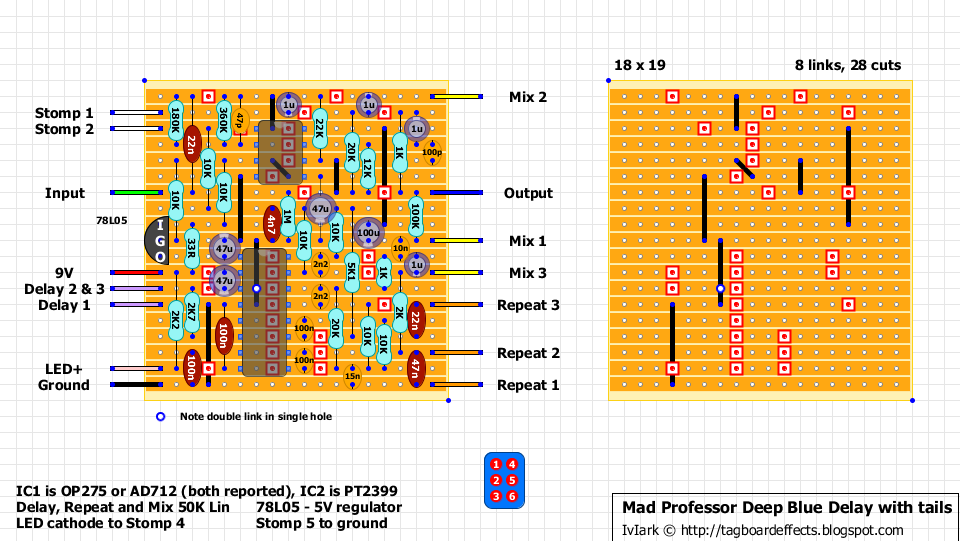I have minimal knowledge about electronics but have been following a few builds on this site and haven't run into an issue until now. I can't figure out for the life of me how to wire the 3PDT switch in the Tails version of the Deep Blue Delay, since it's not standard. If it's not to much trouble, could someone draw up a diagram or explain how to do it? And does the build call for a separate ON/ON switch? If so would the instructions to wire Stomp 1 etc. actually mean to wire it to the ON/ON switch? Thanks, hope this makes sense.
